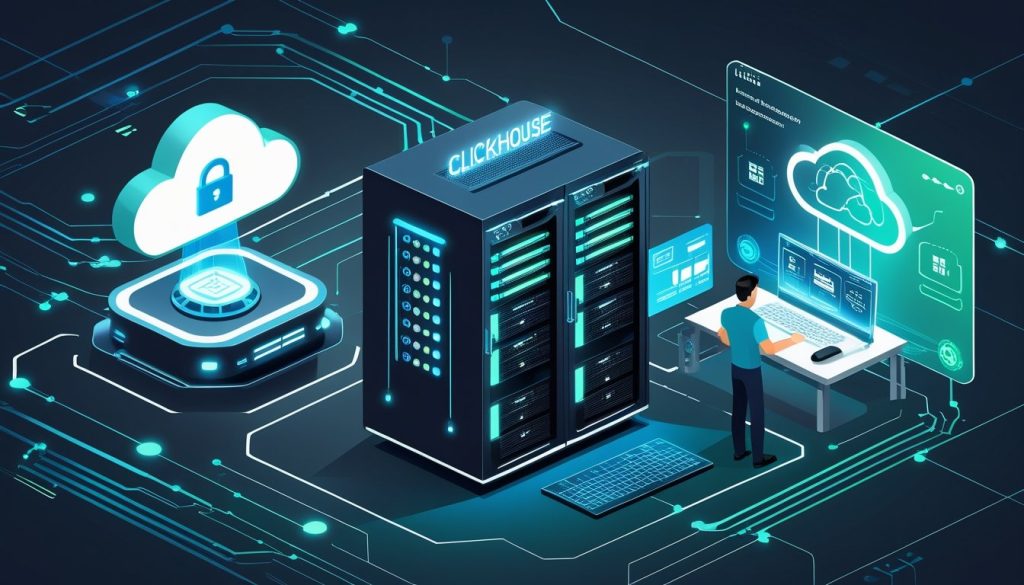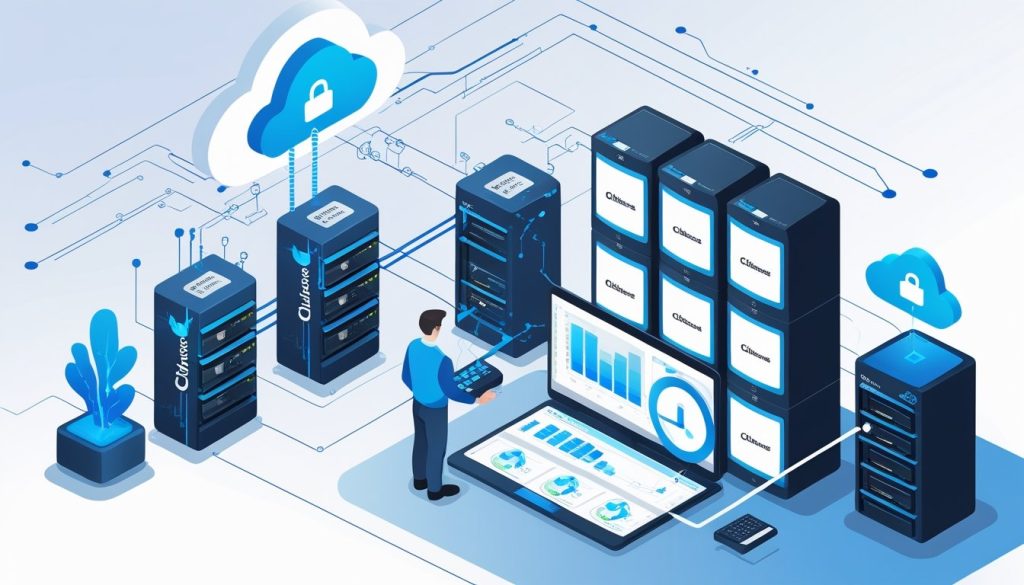ClickHouse databases absolutely need solid backup strategies. If you’re in charge of one, you know how messy things get without a plan—especially when your data starts piling up and you still need fast recovery.

The real trick with ClickHouse backups is blending those built-in backup commands with S3 storage and a schedule you can actually stick to. That way, you get the best of both worlds—local control and remote peace of mind. ClickHouse lets you use full and incremental backups together, so you can build reliable backup chains without overcomplicating things.
Automated S3 backups make it a breeze to restore whole databases or just a single table. Once you know how to set up remote storage endpoints and schedule maintenance, the backup process gets a lot less intimidating.
Key Takeaways
- ClickHouse combines full and incremental backups for efficient backup chains.
- S3 integration means you can restore at the table level, not just the whole database.
- Good scheduling and monitoring keep your backups reliable and recovery times short.
Fundamentals of ClickHouse Backups

ClickHouse gives you several ways to handle data protection right out of the box. If you know the backup engines and where you want your data to end up, you can make smarter choices about how to keep it safe.
Backup Approaches and Terminology
ClickHouse breaks backups into two types: full and incremental. Full backups grab everything in your database at a certain moment. Incremental backups just save what’s changed since the last run.
Full Backups capture databases or tables exactly as they are at that point. Sure, they eat up more storage, but you get a complete data recovery option if you ever need it.
Incremental Backups only store the changes since your last backup. They’re lighter on storage, but you’ll need the whole backup chain to restore fully.
ClickHouse Cloud leans on backup chains: start with a full backup, then stack incrementals on top. It’s pretty straightforward once you try it.
Admins can back up at different levels:
- Table level
- Database level
- Cluster level
Each level lets you pick how granular you want your recovery to be.
ClickHouse-Builtin Backup and Restore Commands
ClickHouse ships with its own BACKUP and RESTORE commands. No need for outside tools—just run them right in the database engine.
Here’s the basic syntax:
BACKUP DATABASE database_name TO destination
RESTORE DATABASE database_name FROM destinationYou can point backups to local disks or cloud storage. The commands handle different engines like S3, local files, or network storage.
If you’re running a cluster, just add ON CLUSTER for distributed backups:
BACKUP DATABASE mydb ON CLUSTER mycluster TO Disk('s3','backup.zip')The built-in commands automatically take care of metadata and table structures. They keep your data consistent while backing up, which is a huge relief.
Understanding Backup Engines and Destinations
Backup engines in ClickHouse decide where and how your backups get stored. Each one comes with its own pros and cons.
Disk Engine keeps backups on local files or network drives. It’s simple and works fine for smaller setups.
S3 Engine hooks right into Amazon S3 or anything S3-compatible. It handles remote backups and uploads for you.
Popular destinations include:
- Local disk
- NAS (network storage)
- Cloud object storage (S3, GCS)
- Shared file systems
Local storage is fast but not great for disaster recovery. Cloud storage is safer if disaster strikes, but you’ll need good network connectivity.
Don’t forget to test your restore process with your chosen engine and destination. It’s better to catch issues early than during a crisis.
Configuring and Managing ClickHouse Backups

The clickhouse-backup utility really streamlines backup management. You get automated scheduling, flexible configs, and support for both full and incremental backups—plus built-in retention policies so storage doesn’t spiral out of control.
Installing and Setting Up clickhouse-backup
First off, you need to install and configure clickhouse-backup before you start. Grab the latest version from GitHub or use your favorite package manager.
Once it’s on your system, point it at your ClickHouse server config. By default, the config file lives at /etc/clickhouse-backup/config.yml.
Basic configuration includes:
- ClickHouse connection info (host, port, username, password)
- Where to store backups (local or remote paths)
- Compression settings
- How you want to name backups
Make sure the backup user can read all databases and tables. You can store backups locally or push them to S3, depending on your setup.
Run clickhouse-backup check-config to double-check your config before you jump in.
Backup Configuration and Scheduling
Scheduling backups usually means setting up cron jobs. Most folks go with daily or weekly runs, depending on how much data they can afford to lose.
Some common cron patterns:
0 2 * * *— Daily at 2 AM0 2 * * 0— Sundays at 2 AM0 */6 * * *— Every 6 hours
The config file lets you pick which databases and tables to back up or skip. Exclusion patterns are handy for leaving out temp or log tables you don’t care about.
Key options:
general.remote_storage— Type of remote storage (s3, gcs, azure)general.max_file_size— Max backup file sizegeneral.backups_to_keep_local— How many local backups to keepgeneral.backups_to_keep_remote— Remote retention count
Test your setup with clickhouse-backup create test-backup before you automate everything. Saves headaches later.
Full and Incremental Backup Strategies
ClickHouse and clickhouse-backup let you use both full and incremental backups. Full backups grab everything, while incrementals save just the changes.
Why go full?
- You get everything back, no questions asked
- Restores are simpler
- You’re not relying on previous backups
Why go incremental?
- Way less storage needed
- Backups finish faster
- Less load on your system
clickhouse-backup handles backup chains for you if you choose incremental. You can set how often to run fulls and fill in with incrementals as needed.
Altinity suggests weekly full backups and daily incrementals for most production setups. It’s a nice balance between recovery options and storage costs, though your mileage may vary.
Managing Backup Retention and Cleanup
Retention policies keep your storage from exploding. clickhouse-backup automatically cleans up old backups locally and remotely if you set the limits right.
Retention settings:
backups_to_keep_local— Local backup countbackups_to_keep_remote— Remote backup countfull_backups_to_keep— How many fulls to keep
Want to delete a backup right now? Use backup delete with the backup name or by age.
Cleanup commands:
clickhouse-backup delete old-backup-name— Remove a specific backupclickhouse-backup clean— Wipe out backups over the limit
Cleanup usually runs after each backup if you’ve set up retention. That way, you don’t have to babysit your storage all the time.
Just make sure you have the right permissions for remote cleanup—cloud storage won’t let you delete stuff without the right credentials.
Remote Storage and S3 Integration for ClickHouse Backups
ClickHouse works with loads of remote storage backends: AWS S3, Google Cloud Storage, FTP, SFTP, and even Alibaba Cloud OSS. You can stash backups in the cloud, on file servers, or wherever your security team lets you.
Setting Up ClickHouse S3 Sink
Admins set up S3 as a backup target using ClickHouse’s built-in S3 integration. You’ll need AWS credentials, the bucket name, and the right endpoint to get connected.
Just point the backup config at your S3 endpoint, drop in your keys, and choose a bucket path. It’s not rocket science, but double-check your permissions.
Key S3 parameters:
- Endpoint URL: S3 service or custom endpoint
- Access credentials: AWS access key ID and secret
- Bucket name: Where your backups go
- Region: AWS region for the bucket
S3 supports both full and incremental backups. Fulls push everything, incrementals just the changes.
ClickHouse tracks backup metadata in S3 so you can see what’s what and restore efficiently. Honestly, it’s pretty smooth once you’ve got it set up.
ClickHouse Backups to FTP, SFTP, and OSS
FTP and SFTP are still around for a reason—sometimes you just need to move files the old-fashioned way. Some setups demand it, especially if cloud storage is off-limits.
SFTP adds encryption, so it’s a safer bet for sensitive data. If you’re dealing with compliance, you’ll probably lean this way.
What you need for FTP/SFTP:
- Server address
- Port (21 for FTP, 22 for SFTP)
- Username and password
- Target directory on the server
Alibaba Cloud OSS works a lot like S3 for backups. You’ll need the endpoint, keys, and bucket info, but otherwise, it’s a familiar process.
OSS gives you the same features as S3, including incremental backups and metadata management.
Integrating with Google Cloud Storage
Google Cloud Storage (GCS) is another solid option for ClickHouse backups. Setup is a lot like S3, but you’ll use Google’s authentication instead.
GCS wants a service account or OAuth token. You’ll need to create a service account with storage permissions for backups to work smoothly.
GCS config needs:
- Bucket name: Where your backups land
- Project ID: Google Cloud project
- Credentials: Service account JSON key
- Region: GCS storage region
Set up authentication with environment variables or credential files. It keeps things secure and lets you automate backups without headaches.
GCS also offers lifecycle policies to move old backups to cheaper storage automatically. That’s a nice perk if you’re watching your cloud bill.
Making S3 and Remote Endpoints Work for You
Storage policies can really boost backup performance across different remote endpoints. You can set up tiered storage to move older backups into cheaper storage classes automatically.
Caching helps speed up both backup and restore times with remote storage. ClickHouse keeps frequently accessed backup data handy in a local cache, which means fewer slow network transfers.
Performance Optimization Strategies:
- Turn on compression for backup files
- Use multipart uploads for those massive databases
- Tweak cache sizes to fit your workload
- Pick regional endpoints close to your ClickHouse servers
Network connectivity can make or break your backup speeds. Always test bandwidth and latency to remote endpoints before rolling out production backups.
It pays to watch your backup operations. Track things like how long backups take, how fast data moves, and error rates for each storage backend.
Backup Maintenance, Restore Operations, and Performance
ClickHouse backup systems need regular care. Keeping up with maintenance and optimizing restore steps helps protect your data.
Performance tuning during backup and restore keeps your system snappy. Automating maintenance can also cut down on manual work.
How to Restore from Remote Storage
The clickhouse-backup restore_remote command lets you restore straight from remote storage. You don’t need to download the backup locally first, which saves disk space and a lot of time, especially with big datasets.
It’s smart to test restores on spare clusters before touching production. The RESTORE command is flexible—it handles table-level, database-level, and partition-level recoveries.
Restore Command Structure:
- Full database:
RESTORE DATABASE database_name FROM backup_name - Single table:
RESTORE TABLE table_name FROM backup_name - Specific partition:
RESTORE TABLE table_name PARTITION partition_id FROM backup_name
ClickHouse doesn’t do point-in-time recovery like some databases. You have to restore from the latest backup that has the data you need.
Watching and Verifying Backups
Verifying backups regularly is crucial. It prevents nasty surprises from corrupted or incomplete files.
Admins should schedule automated tests to restore sample data and check backup integrity. Monitoring tools need to keep tabs on backup completion times, file sizes, and how much storage you’re using.
Failed backups need immediate attention. You don’t want to find out too late that your data isn’t protected.
Key Monitoring Metrics:
- Backup completion status
- File size consistency
- Storage space utilization
- Restore operation success rates
Log files are a goldmine for troubleshooting. They show what happened during backup and restore, and help you spot bottlenecks or errors.
Boosting Backup and Restore Performance
Backups can slow down ClickHouse queries if you run them during busy hours. Try scheduling them when traffic is light to keep things running smoothly.
Incremental backups are a lifesaver—they use less storage and finish faster than full ones. ClickHouse Cloud combines full and incremental backups in backup chains for the best performance.
Optimization Strategies:
- Compress backup files to save space
- Limit how many backup threads run at once, based on your hardware
- Tune buffer sizes for network transfers
- Throttle backups during business hours
Network bandwidth matters a lot with remote storage. Make sure you’ve got enough bandwidth for backup operations so you don’t slow down your main production traffic.
Smarter Ways to Automate Maintenance
The clickhouse-backup delete local command wipes out old backup files from local storage without you lifting a finger. You can set up cron jobs to run this command on a schedule, which helps avoid running out of disk space.
When you automate cleanup, you’ve got to balance storage costs against how long you really need to keep your data. Most teams hang onto daily backups for about a month, and keep weekly ones around a bit longer.
Sample Cron Configuration:
# Daily backup at 2 AM
0 2 * * * /usr/bin/clickhouse-backup create
# Weekly cleanup of old local backups
0 3 * * 0 /usr/bin/clickhouse-backup delete local --keep-last=7Don’t forget to add error handling and notifications to your scripts. If backups fail, email alerts or hooks into your monitoring tools will let admins know fast—nobody likes surprises here.


